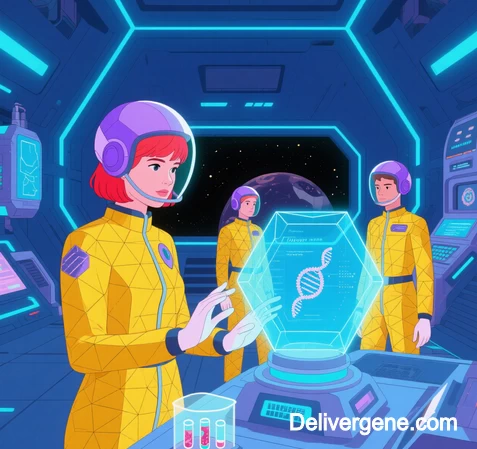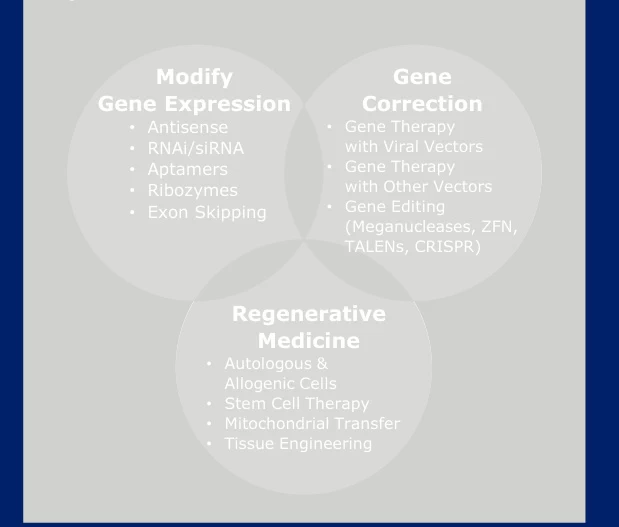
1. Therapeutic Genetic Payload: The Molecular Blueprint
The core of any gene therapy lies in its genetic cargo—precisely engineered nucleic acids designed to correct disease mechanisms at their source. Three primary payload types enable distinct therapeutic strategies:
A. Corrective DNA Constructs
- Gene Replacement: Full-length functional genes (e.g., RPE65 for retinal degeneration) delivered via viral vectors
- Suicide Genes: Thymidine kinase (TK) systems triggering cancer cell apoptosis upon prodrug activation
- Epigenetic Modulators: CRISPR-dCas9 fusion proteins for targeted chromatin remodeling

B. Regulatory RNA Agents
| Type | Mechanism | Application |
|---|---|---|
| siRNA/shRNA | RNAi-mediated mRNA degradation | Transthyretin amyloidosis |
| Antisense Oligos | Splice-switching/modification | Spinal muscular atrophy |
| mRNA | Transient protein expression | COVID-19 vaccines |
C. Gene Editing Machinery
- CRISPR-Cas9: Ribonucleoprotein complexes for DSB induction
- Base Editors: C•G-to-T•A or A•T-to-G•C conversions without DSBs
- Prime Editors: Targeted insertions/deversions (up to 44bp)
Suggested Figure 1: Genetic Payload Spectrum
[Illustration:
- Left: DNA plasmid structure (promoter-gene-polyA)
- Center: siRNA/mRNA secondary structures
- Right: CRISPR-Cas9 RNP complex bound to DNA]
2. Delivery Vectors: Precision Navigation Systems
Overcoming biological barriers requires engineered vectors that combine targeting specificity, payload protection, and cellular penetration.
A. Viral Vectors: Evolved Infiltrators
| Vector | Capacity | Tropism | Clinical Edge |
|---|---|---|---|
| AAV | ≤4.7 kb | Retinal/neural/hepatic | Non-integrating; low immunogenicity |
| Lentivirus | ≤8 kb | Hematopoietic cells | Stable integration in dividing cells |
| Adenovirus | ≤36 kb | Broad tissue range | High transduction efficiency |
B. Non-Viral Platforms: Synthetic Solutions
- Lipid Nanoparticles (LNPs): pH-sensitive ionizable lipids enabling endosomal escape
- Polymeric Nanoparticles: Biodegradable PLGA carriers for sustained release
- Electroporation: Transient membrane permeabilization for direct cytoplasmic delivery
- GalNAc Conjugates: Hepatocyte-specific targeting via ASGPR receptors
Suggested Figure 2: Vector Engineering Innovations
[Illustration:
- Top: AAV capsid engineering (mutant capsid proteins)
- Bottom: LNP cross-section (ionizable lipids encapsulating mRNA)]
3. Therapeutic Mechanisms: Genomic Intervention Strategies
Four fundamental approaches enable functional genomic restoration:
A. Gene Augmentation
- Principle: Introduction of functional gene copies
- Use Case: CFTR delivery for cystic fibrosis
- Key Requirement: Persistent expression in terminally differentiated cells
B. Gene Silencing
- Tools: siRNA, shRNA, antisense oligonucleotides
- Action: Knockdown of dominant-negative mutants (e.g., Huntington’s disease)
C. Genome Editing
| Approach | DNA Modification | Therapeutic Advantage |
|---|---|---|
| NHEJ | Indel mutations | Knockout of disease genes |
| HDR | Precise sequence replacement | Correction of point mutations |
| Epigenetic Edit | DNA methylation/histone mod | Reversal of pathological gene silencing |
D. Cell Reprogramming
- CAR-T Therapy: Ex vivo engineering of T-cell receptors
- Stem Cell Modification: Hematopoietic stem cell editing (e.g., β-globin for sickle cell)
Suggested Figure 3: Mechanistic Workflows
[Illustration:
- Top: Gene augmentation pathway (vector delivery → protein expression)
- Center: CRISPR homology-directed repair (donor template integration)
- Bottom: CAR-T cell activation cascade (tumor cell lysis)]
4. Clinical Implementation Framework
Successful translation requires integrated optimization of:
A. Target Cell Selection Criteria
- Accessibility: Ease of isolation/administration (e.g., hematopoietic vs. neuronal cells)
- Longevity: Stem cells for sustained effect vs. transiently transfected cells
- Safety Profile: Mitigating oncogenic risks in integrating vectors
B. Expression Control Systems
- Tissue-Specific Promoters: Albumin for hepatocytes, SYN1 for neurons
- Inducible Systems: Tetracycline/doxycycline-regulated expression
C. Manufacturing & Safety
| Challenge | Solution |
|---|---|
| Vector Purity | Affinity chromatography purification |
| Genotoxicity | CRISPR off-target screening (CIRCLE-seq) |
| Immunogenicity | CpG depletion in plasmid DNA |
5. Clinical Translation: From Bench to Bedside
A. Hematologic Disorders
- Example: β-globin gene addition via lentivirus for β-thalassemia
- Key Outcome: 80% transfusion independence in trials
B. Ocular Diseases
- Technology: Subretinal AAV-RPE65
- Result: 93% of LCA patients gain functional vision
C. Neuromuscular Diseases
- Breakthrough: Intravenous AAV9-SMN1 for spinal muscular atrophy
- Impact: 92% survival without ventilation at 14 months
Suggested Figure 4: Clinical Impact Visualization
[Illustration:
- Left: Retinal transduction map (AAV distribution in macular region)
- Right: Hematopoietic stem cell engraftment post-editing]
Conclusion: The Genomic Medicine Trinity
Gene therapy’s transformative power arises from the synergy of three elements:
- Precision Payloads – Molecular tools correcting genetic defects
- Intelligent Vectors – Engineered systems navigating biological barriers
- Contextual Mechanisms – Disease-adapted intervention strategies
As clinical validation accelerates—with 500+ active trials and 20+ approved therapies—this triad framework enables cures for previously untreatable conditions. Future advances in synthetic biology (e.g., DNA origami vectors) and AI-optimized delivery will further expand therapeutic horizons, ultimately fulfilling the vision of genomic medicine as routine healthcare.
Data sourced from publicly available references. For collaboration or domain inquiries, contact: chuanchuan810@gmail.com.
